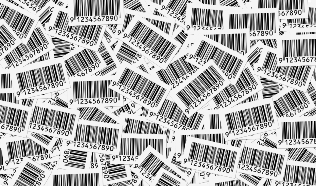 It is time for the RxTrace look at the estimated rise in the percentage of drugs in the U.S. supply chain that are serialized. Every year we take a look at this topic while longingly wishing that someone would perform a real study and publish the numbers. However, it may not make much difference from here on out because it will be impossible for drugs without serial numbers to exist in the U.S. supply chain in just a few years. So let’s take a look. Continue reading InBrief: Estimated Rise in Serialized Drugs in The U.S. Supply Chain, 2014
It is time for the RxTrace look at the estimated rise in the percentage of drugs in the U.S. supply chain that are serialized. Every year we take a look at this topic while longingly wishing that someone would perform a real study and publish the numbers. However, it may not make much difference from here on out because it will be impossible for drugs without serial numbers to exist in the U.S. supply chain in just a few years. So let’s take a look. Continue reading InBrief: Estimated Rise in Serialized Drugs in The U.S. Supply Chain, 2014
Tag Archives: serialization
DSCSA: Congress Should Have Mandated Randomization
 Congress should have mandated randomization of drug serial numbers, but they did not, so it is up to each manufacturer to recognize the importance it would bring to the protection of their brands and of the supply chain. Let me explain.
Congress should have mandated randomization of drug serial numbers, but they did not, so it is up to each manufacturer to recognize the importance it would bring to the protection of their brands and of the supply chain. Let me explain.
The text of the Drug Supply Chain Security Act (DSCSA) was developed last year by Congressional staff in consultation/negotiation with various lobbying organizations—primarily the Prescription Drug Security Alliance (PDSA). The effect of the legislation is to create a way of protecting the U.S. pharmaceutical supply chain that relies primarily on product identifier authentication (PIA) (see “Product Identifier Authentication” and “The Aggregation Hoax and PIA”) for at least the first 10 years and possibly beyond. Continue reading DSCSA: Congress Should Have Mandated Randomization
Randomization—An Interview with Ken Traub—Part 5: Other Approaches
 This is the last of a five part interview with Ken Traub, GS1 standards expert and independent consultant, on GS1 serial number randomization. The full series includes essays covering:
This is the last of a five part interview with Ken Traub, GS1 standards expert and independent consultant, on GS1 serial number randomization. The full series includes essays covering:
- GS1 Serial Number Considerations
- Properties of Randomization
- Threat Analysis
- Algorithmic Approach
- Other Approaches to Randomization (this essay)
This week Ken talks about other approaches to serial number randomization. – Dirk. Continue reading Randomization—An Interview with Ken Traub—Part 5: Other Approaches
Randomization—An Interview with Ken Traub—Part 3: Threat Analysis
 This is the third of a five part interview with Ken Traub, GS1 standards expert and independent consultant, on GS1 serial number randomization. The full series includes essays covering:
This is the third of a five part interview with Ken Traub, GS1 standards expert and independent consultant, on GS1 serial number randomization. The full series includes essays covering:
- GS1 Serial Number Considerations
- Properties of Randomization
- Threat Analysis (this essay)
- Algorithmic Approach
- Other Approaches to Randomization
This week Ken introduces the concept of threat analysis. – Dirk. Continue reading Randomization—An Interview with Ken Traub—Part 3: Threat Analysis
The Future of Healthcare Supply Chain Security
 Let’s take a brief pause from our in-the-moment work on meeting today’s healthcare supply chain security needs and consider what the supply chain will look like in the future. Because of regulations and laws enacted in 2012 and 2013 in the U.S., and expected in 2014 in the E.U., we know more today about how healthcare supply chain security will work In 2024 than looking forward in any previous 10 year period. In the last two years the U.S. and the E.U. have enacted legislation and introduced regulations that will have a profound impact on the security of these major supply chains in ten years. These include:
Let’s take a brief pause from our in-the-moment work on meeting today’s healthcare supply chain security needs and consider what the supply chain will look like in the future. Because of regulations and laws enacted in 2012 and 2013 in the U.S., and expected in 2014 in the E.U., we know more today about how healthcare supply chain security will work In 2024 than looking forward in any previous 10 year period. In the last two years the U.S. and the E.U. have enacted legislation and introduced regulations that will have a profound impact on the security of these major supply chains in ten years. These include:
- In the U.S.:
- In the E.U.:
- The Falsified Medicines Act (FMA)
- The Harmonized Unique Device Identification Framework
- The anticipated Delegated Acts related to the FMA
Continue reading The Future of Healthcare Supply Chain Security
DQSA: How Should Transaction Data Be Exchanged?
 The U.S. FDA just published a docket asking for public input into standards for the interoperable exchange of information for tracing of human, finished, prescription drugs in paper or electronic format. Ironically, they will accept responses to the docket in either paper or electronic format. Comments should be submitted to the FDA within 60 days. If my calculation is correct, you have until April 21st to submit your comments.
The U.S. FDA just published a docket asking for public input into standards for the interoperable exchange of information for tracing of human, finished, prescription drugs in paper or electronic format. Ironically, they will accept responses to the docket in either paper or electronic format. Comments should be submitted to the FDA within 60 days. If my calculation is correct, you have until April 21st to submit your comments.
This docket was expected because the Drug Supply Chain Security Act (DSCSA), enacted last November, gives the FDA one year to publish a draft guidance document that establishes standards for the interoperable exchange of that type of information, and they are required to consult with the industry and other interested parties [see Section 582(a)(2)]. I have written about this requirement and the short time after the guidance is published before the members of the supply chain must make use of those standards (see “The Flaw That Must Be Addressed in H.R. 3204, The Drug Quality and Security Act” and “DQSA: Getting To Electronic Transaction Data Exchange“). This docket fulfills the first of many mandates that the FDA is facing in
Continue reading DQSA: How Should Transaction Data Be Exchanged?
How the DQSA Will–And Won’t–Protect The Supply Chain, Part 2
 Last week I published an overly long essay about how the supply chain provisions of the new U.S. Federal DQSA will and won’t protect the pharma supply chain. Believe it or not, I had more to say on the subject, but because that essay was already too long, I withheld my additional thoughts until now. Part 1 took another look at a number of supply chain crimes that have occurred over the last 5 to 6 years and attempted to determine how the new Drug Supply Chain Security Act (DSCSA) that is contained within the DQSA will add new protections that will or won’t help prevent crimes like them in the future.
Last week I published an overly long essay about how the supply chain provisions of the new U.S. Federal DQSA will and won’t protect the pharma supply chain. Believe it or not, I had more to say on the subject, but because that essay was already too long, I withheld my additional thoughts until now. Part 1 took another look at a number of supply chain crimes that have occurred over the last 5 to 6 years and attempted to determine how the new Drug Supply Chain Security Act (DSCSA) that is contained within the DQSA will add new protections that will or won’t help prevent crimes like them in the future.
In this Part 2 essay I want to look at the issue in a different way. I’d like to compare the approach that Continue reading How the DQSA Will–And Won’t–Protect The Supply Chain, Part 2
How the DQSA Will–And Won’t–Protect The Supply Chain, Part 1
 The supply chain provisions contained within the Drug Quality and Security Act (DQSA)—themselves known as the Drug Supply Chain Security Act (DSCSA)—mark a significant achievement by Congress and the industry to protect the U.S. pharmaceutical supply chain from criminals. It is the first completed attempt since 1987 when the Prescription Drug Marketing Act (PDMA) was enacted by Congress and signed by President Ronald Reagan. In comparison, the provisions of the DSCSA are much more detailed and extensive than the PDMA and they read as if they were heavily influenced by people who solidly understand the scale and complexity of the legitimate supply chain. Which, they were, based on the contribution of the Pharmaceutical Distribution Security Alliance (PDSA)—made up of key stakeholders in the supply chain—in their development. That should ensure that the industry will be able to adopt the technology and process modifications necessary to meet the new law on time.
The supply chain provisions contained within the Drug Quality and Security Act (DQSA)—themselves known as the Drug Supply Chain Security Act (DSCSA)—mark a significant achievement by Congress and the industry to protect the U.S. pharmaceutical supply chain from criminals. It is the first completed attempt since 1987 when the Prescription Drug Marketing Act (PDMA) was enacted by Congress and signed by President Ronald Reagan. In comparison, the provisions of the DSCSA are much more detailed and extensive than the PDMA and they read as if they were heavily influenced by people who solidly understand the scale and complexity of the legitimate supply chain. Which, they were, based on the contribution of the Pharmaceutical Distribution Security Alliance (PDSA)—made up of key stakeholders in the supply chain—in their development. That should ensure that the industry will be able to adopt the technology and process modifications necessary to meet the new law on time.
But will all this also lead to true protection of the supply chain from criminal activities? Will the DSCSA portion of the DQSA end up presenting new and insurmountable barriers against criminals who game the supply chain to their advantage and thereby putting patients at risk? These are the true measures of the success of this type of legislation. How can we know if the DSCSA will have these positive affects? Continue reading How the DQSA Will–And Won’t–Protect The Supply Chain, Part 1
